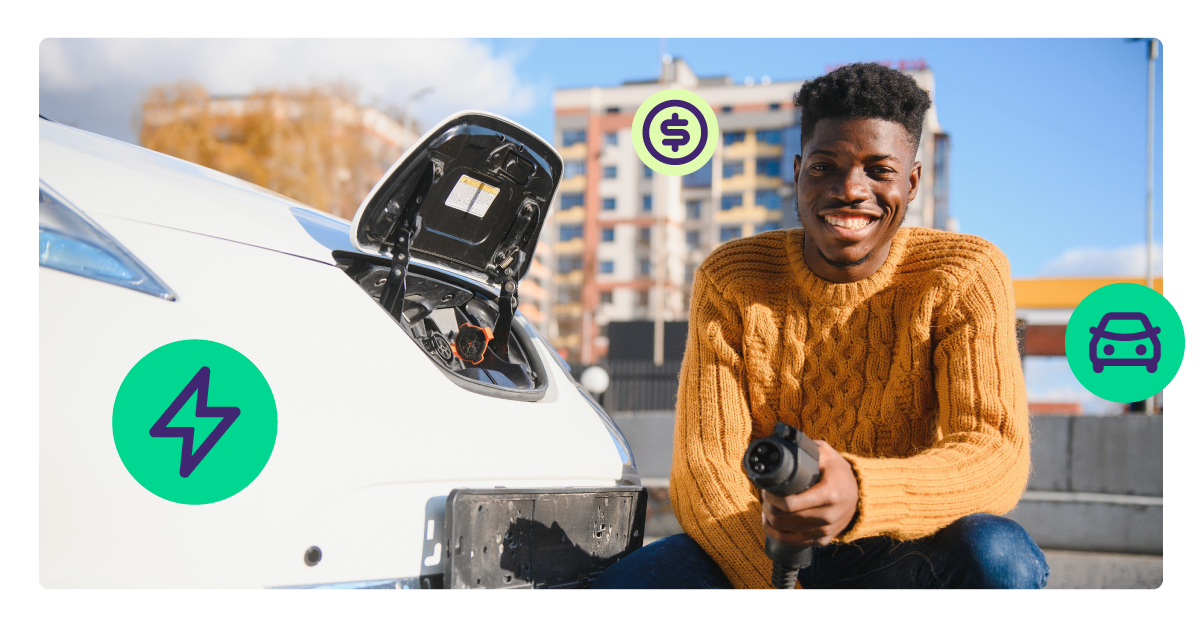Electric vehicle (EV) charging stations are popping up across the U.S. faster than ever — driven by surging EV adoption and a push from both the industry and government to build a charging network that can support drivers anywhere they go.
Since 2020, publicly available EV chargers have doubled across the United States. While that growth is impressive, it hasn’t kept up with the rising demand for EVs themselves.
In 2025, American drivers now have their choice of 82 different EV models — almost five times more than they did in 2020. And last year, over 1.2 million new EVs sold, roughly five times more than in 2020. While there’s no way to know when EVs will overtake cars with internal combustion engines (ICE), many countries have targets in the 2030s. Some analysts even think EV production costs could beat out ICE by as early as 2027.
With all those new EVs set to hit the road, the nationwide charging network will need to grow quickly in the years to come. Thankfully, that will create new opportunities for everyone involved in supporting EV charging payments, including manufacturers, charging station hosts (like retailers) and, of course, payments companies.
In this article, we’ll look at some of the current growth trends in the U.S. charging market, the opportunity for expansion into a highly untapped retail space and what payments companies can do to position themselves for success as paid charging stations begin to cover the map.
Growth Trends in the U.S. EV Charging Market
Over the past five years, the U.S. has made major leaps toward establishing a strong, nationwide network of public EV chargers. As of February 2024, there were roughly 61,000 publicly available charging stations across the United States — more than double what was available in 2020.
As of 2024, the National Renewable Energy Laboratory’s (NREL) Station Locator lists 188,096 individual public charging ports across the U.S. Direct current fast chargers (DCFC), which can charge an EV to 80% in as little as 20 minutes, saw the fastest growth rate at 7.4%. Meanwhile, slower Level 2 chargers added the most total units, with 8,415 new installations.
Charging stations are still concentrated in urban areas, but rural regions are catching up fast. In fact, charger installations in rural areas have grown by 34% — outpacing the 29% growth seen in urban centers. In some areas, charger deployment is moving faster than EV adoption itself. For instance, Wyoming, North Dakota and West Virginia now have the highest ratio of public chargers to registered EVs.
California continues to dominate the market in terms of the number of public charging ports available, but throughout the U.S., the top three growth regions in 2024 included:
- The Northeast (13.7%)
- North Central (8.6%)
- The Southeast (8.2%)
Today, 64% of Americans live within two miles of a public charging station. That’s an important development since proximity to chargers has a significant impact on the public’s perception of EVs. Americans who live within one mile of a public charging station are almost 75% more likely to consider buying an EV in the future. Drivers who live near public chargers are also more likely to have a positive opinion of EVs and to feel confident that the U.S. will be able to meet its EV infrastructure needs.
Future EV Infrastructure Growth Could Dwarf Current Rates
The United States could have as many as 33 million EVs on the road by 2030. In an analysis of a potential 2030 national charging network, the NREL estimated that supporting growth will require 182,000 DC fast chargers and 1,067,000 Level 2 chargers. That puts current public charger availability at just 13% of where it needs to be.
The U.S. may fall short of the NREL’s charger benchmarks by 2030, but one thing is clear: EV charging infrastructure needs to scale quickly — especially over the next four to five years and particularly along long-distance routes and in rural areas.
Cooling Attitudes in Government May Have Some Impact
The Trump administration has taken a less friendly approach to EV charging infrastructure than the outgoing Biden administration did. It’s yet to be seen what the long-term impacts will be, but in the short term, some key EV programs have been paused. That includes the National Electric Vehicle Infrastructure (NEVI) Formula program.
However, it’s important to note that most of the charging stations planned under NEVI haven’t been built yet. So far, the growth in EV charging infrastructure over the last five to ten years has been fueled largely by private investment, meaning that momentum could continue — even without federal funding. At the very least, canceling NEVI likely wouldn’t stall current growth rates, especially given how committed major EV manufacturers like Tesla are to expanding charger networks.
The Untapped Retail EV Charging Opportunity
One of the biggest areas of untapped growth is retail parking lots. Consumer Reports found that just 1% of U.S. retail locations offer any kind of charging, including roughly 7% of big box retailers, 6.6% of grocery stores and 2.5% of department stores.
Considering how much retail parking space there is in the United States, the potential for retail EV charging stations is clear. At an average of five to ten parking spaces per 1000 square feet of commercial space, there are somewhere between 60 million and 120 million parking spots associated with the 12 billion square feet of retail space in the U.S.
Today, retailers are roughly 30,000 DC fast chargers and 178,000 Level 2 chargers short of where they’ll need to be to meet 2030 demand. But, many businesses are working hard to close that gap.
Walmart is currently developing its own nationwide network of DC fast chargers. Small-format retailers like 7-Eleven and Circle K are doing the same. Other retailers are partnering with existing EV charging networks, like ChargePoint, to offer Level 2 capabilities. While it’s too soon to predict exactly how the trend will play out, retailers that move early on EV charging are already seeing real advantages.
The EV Charging Upside for U.S. Retailers
Installing commercial EV charging stations is expensive. It costs thousands of dollars for Level 2 stations and potentially hundreds of thousands for DC fast charging stations. But, studies have found that after installing a Level 2 charger, customer idle time goes up by 50 minutes on average, with a corresponding spend of $1 per additional minute spent in-store. Data also shows that 89% of EV drivers make a purchase while waiting for their vehicles to charge at a retailer, and the mere existence of a Tesla Supercharger near a retailer drives revenue up by 5%.
Beyond influencing customer behavior, EV charging serves as a direct revenue stream. Retailers can offer access in several ways: some provide it for free as a perk, others use it to drive paid garage parking, and many charge drivers by the kilowatt-hour — either from the moment they plug in or after a set time limit.
The EV Charging Opportunity for Payments Companies
All paid EV charging stations need to support multiple payment methods. Common options include credit and debit cards, contactless payments like digital wallets, app-based systems, membership cards, and “plug and charge,” where the payment is managed through the car’s software after being plugged in.
As with any checkout experience, offering multiple payment options adds convenience and flexibility. It also helps ensure that a driver running low on charge doesn’t get stranded because of a failed transaction.
Unfortunately, payment failures at EV chargers are still common. One 2022 study conducted in the San Francisco area found that 25% of chargers failed to accept a credit card, and another 16% of EV drivers reported payment issues at charging stations.
While the obvious opportunity lies in building hardware and software for the growing number of chargers hitting the market, the real value is in making those systems more reliable. Companies that develop easier, more dependable payment solutions will have a clear advantage.
In reality, that could look like:
- More robust, weatherproof hardware designed to tolerate extreme temperatures and 24/7 exposure to sunlight, dust, debris and moisture
- Better hardware connectivity to ensure payments don’t fail because of poor network connections, especially in rural and remote areas
- More user-friendly payment experiences that minimize the risk of payment failure due to driver error
- Payment systems that can be integrated into a charger in a more physically streamlined way to minimize gaps and exposure
- Improved error reporting and self-serviceability to minimize downtime when payment systems fail
The good news is, NMI offers a complete suite of hardware and software solutions made specifically for EV charging stations and network apps. With weatherproof payment terminals, no-code gateway integrations and the industry’s best implementation and support teams, we make it easy for you to offer elevated EV charging payment experiences.
To find out more about NMI’s unattended EV charging payment solutions, reach out to a member of our team.





